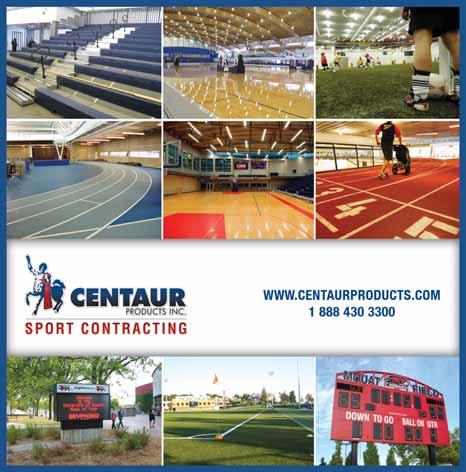
3 minute read
Unanticipated consequences of conventional school renewal
BY LANCE W. ROBERTS, PhD, UNIVERSITY OF MANITOBA
Facility Management Evolution
For decades, school facility management has been guided by an engineering-based, property management model. Within this model, school facility management has evolved. Traditional concerns with the health and safety of participants, as well as operational functionality of buildings, have been supplemented with more recent attention to energy and operational efficiency, as well as asset lifecycle sustainability and carbon footprint reductions.
Most recently, progressive schools are moving beyond the property management model of school facility renewal. The latest models employ a “missionrelevant ” perspective. The mission-relevant model centres on making school renewal investments responsible for answering the question, “How will this investment improve the quality of the teaching and learning environment?”
Measuring Mission-Relevant School Renewal
Conventional property-management school renewal is based on measures like the facility conditional index. These measures are useful since school buildings and components are subject to deterioration and, as such, need to be maintained. The limitation of these measures, and the property-management approach that justifies them, is that schools are not just buildings – they are buildings with a very important public purpose.
Mission-relevant school renewal adds value by taking the educational purposes of schools into account. Like all bestpractices, mission-relevant school renewal requires valid and reliable means of measuring school conditions. For Canadian schools, I have developed two measurement tools that provide this information. The Principals’ Assessment of Schools Survey© identifies which schools in a division’s inventory are most in need of mission-relevant school renewal. The Learn ing Environment Roster© then identifies what specific hindrances within each classroom require remediation. Evidence from almost a thousand schools in four provinces demonstrates the utility and validity of this mission-relevant approach.
What a Mission-Relevant Perspective Reveals
It should come as no surprise that when educators provide informed assessments of the adequacy of school facilities, their evaluations differ from judgements made by engineers. Different kinds of professional judgements provide different kinds of insights.
The Learning Environment Roster© provides valid and reliable information to facility managers about what components are hindering effective teaching and learning. Recent evidence from hundreds of classrooms suggests that the following mission-relevant hindrances are typical:
• Half of school classrooms have ventilation issues that hinder effective teaching and learning, mostly related to stuffiness, dustiness, and allergens. • Sixty per cent of classrooms have aesthetic issues related to painting, as well as floor and ceiling finishes that hinder optimal learning. • Occupant safety and building security issues are found in about thirty per cent of classrooms, including such issues as hazardous materials, mould, and unauthorized entrance. • Natural lighting hindrances constrain effective learning in about a third of classrooms, including instances of both too little and too much natural light. • Interior lighting hinders optimal learning in a third of classrooms, with inadequate control and glare issues predominating. • Heating hindrances are reported in half of classrooms, focusing on both inadequate control and low temperature. • Learning hindrances connected to cooling appear in about 40 per cent of classrooms and, like heating, concentrate on inadequate control and high temperature. • The quality of teaching and learning environments is compromised by acoustic hindrances in a third of classrooms, with noise transfer between rooms and mechanical, lighting, and echoing noises leading the list. Unanticipated Consequences
Without following a validated, scientific protocol that investigates how school facilities are affecting teaching and learning, facility managers have no way of knowing how facilities are compromising the academic mission. These findings about the educational hindrances of school facilities are unrelated to conventional property-management assessments like the facility condition index. Worse, still, is the fact that many existing educational hindrances are connected to previous facility renewal projects, modernization initiatives, or energy efficiency projects conducted in the schools.
In short, without the benefit of missionrelevant assessments of building conditions, conventional facility management strategies will either neglect educationally consequential hindrances or unintentionally exacerbate or create poorer learning environments. The tools and protocols for avoiding these undesirable results are available for facility managers who are connected to the educational mission.


About the Author: Dr. Lance W. Roberts directs the Quality Schools Network at the University of Manitoba. Those people who are interested in learning more about mission-relevant facility management can reach him at: Lance_Roberts@umanitoba.ca.
Sammy Tong
Western Region Sales Manager

Mississauga Offi ce Tel: 866-805-7089 Fax: 905-712-3124
Sparks, NV 800-987-9042
Belimo Americas
219-6279 Eagles Drive Vancouver, BC V6T 2K7 Tel: 604-221-6105 Fax: 604-221-6108 Cell: 778-772-6273 sammy.tong@ca.belimo.com www.belimo.ca










